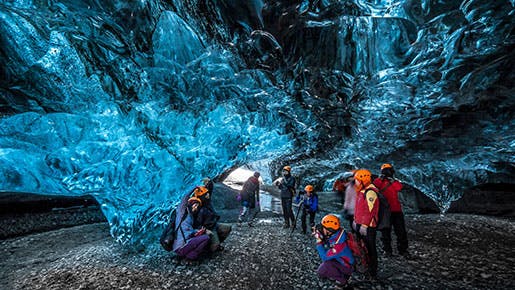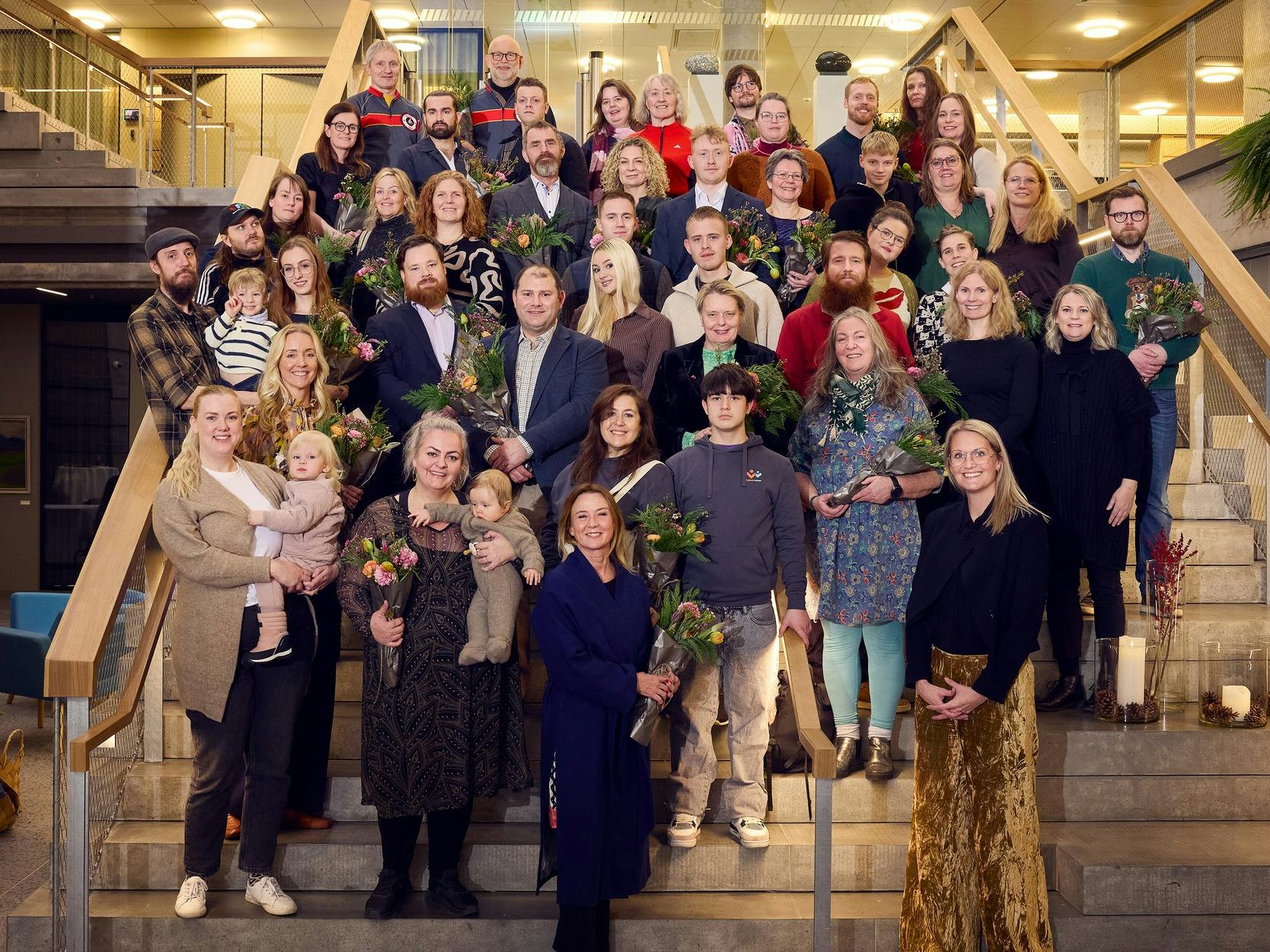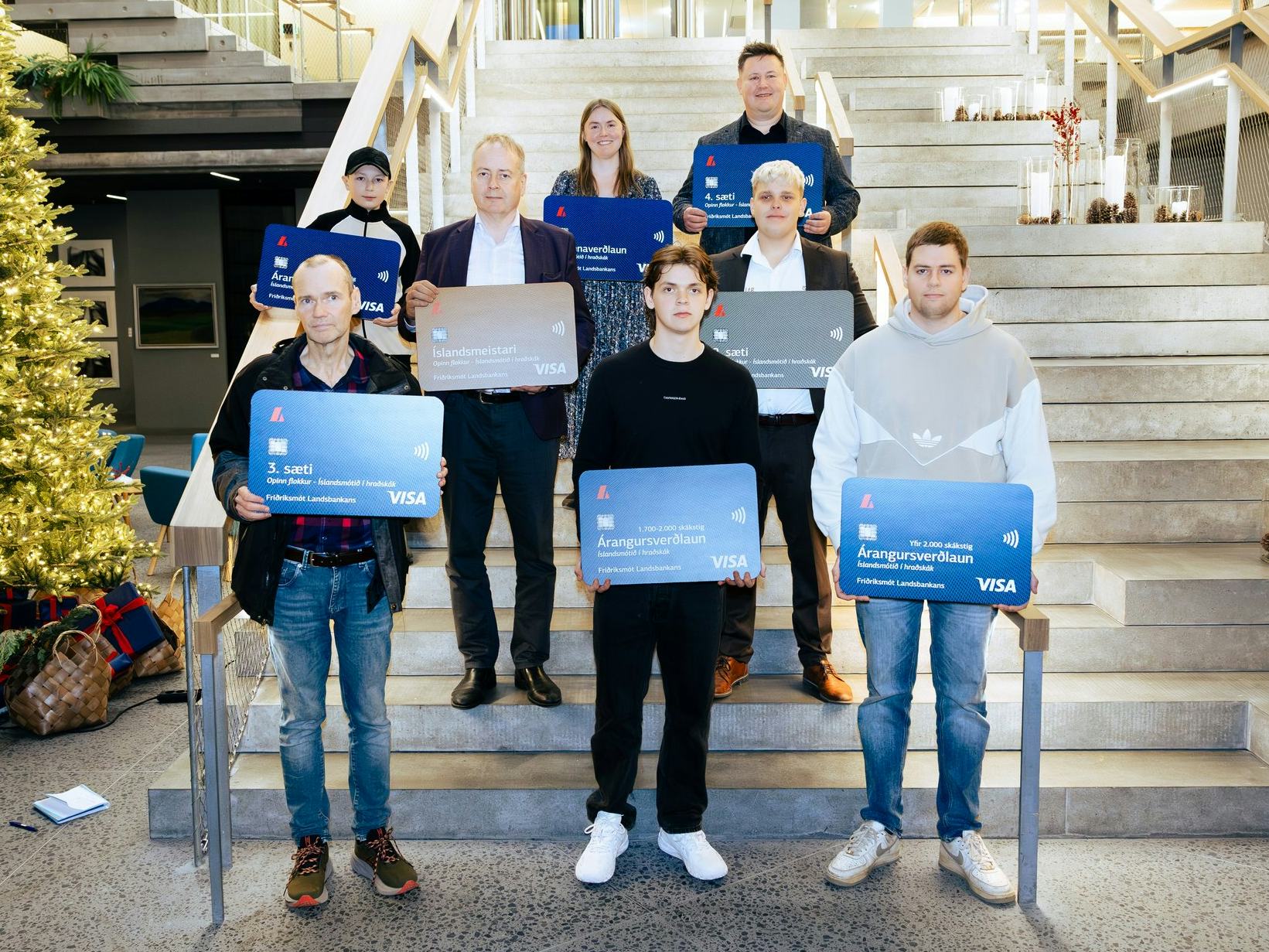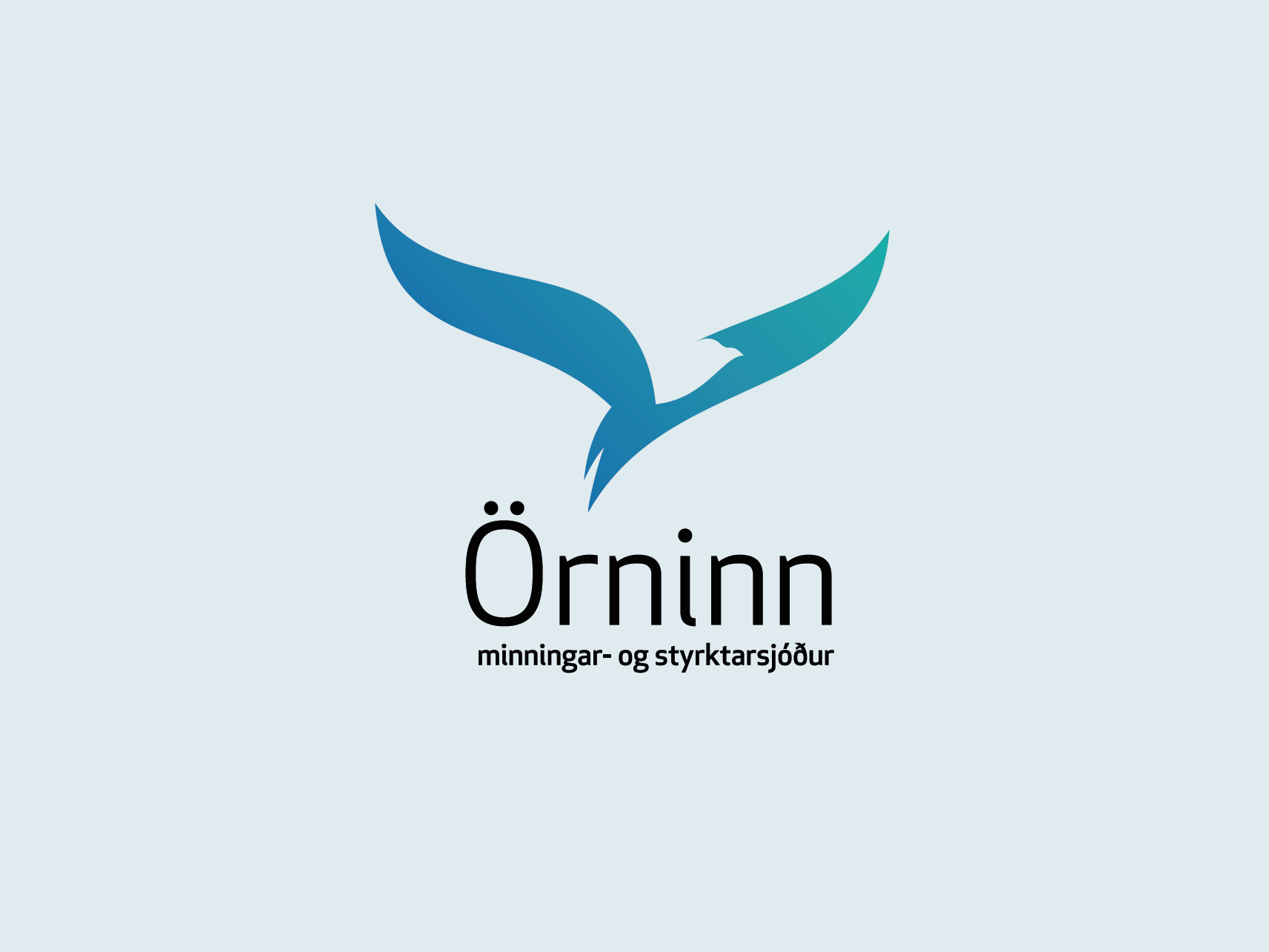
Over seven million tourists have visited Iceland since the beginning of 2011. But what happens next? Landsbankinn Economic Research has authored an in-depth analysis of the Icelandic tourism industry.
The analysis of Economic Research was published in connection with the Bank's conference on tourism held in Harpa on 26 September 2017.
What follows is an English summary of that publication. The publication in its entirety is available in Icelandic on “Umræðan” Landsbankinn's website for economic analysis and reports.
Chapter 1: Tourism is a principal industry in Iceland
- Iceland has become more economically dependent on tourism sector than other countries and tourism has a much more extensive impact on living standards in Iceland than in countries with which we compare ourselves.
- In 2015, export from tourismamounted to 31% of total export. In 2016, this ratio had reached 39% and Landsbankinn Economic Research expects it to reach 42% this year. Globally, this ratio was 7% in 2015.
- Iceland belongs to the world's top-earning countries in terms of per capita GDP. The weight of tourism in export is many times higher than on average in other countries in the high-earning group and it is double that of the second highest ratio among these countries. Countries that are more dependent on tourism all share considerably lower living standards measured in terms of per capita GDP.
- No other country with similar living standards depends to such a great extent on passenger transport. The weight of passenger transport in export was 13.1% in Iceland in 2015. Only in Tajikistan is this ratio slightly higher and in that country, per capita GDP is around USD 1,000 as compared with USD 51,000 in Iceland.
Chapter 2: Unusual relationship between the Icelandic króna and tourism
- One of the identifiers of the upswing in tourism in Iceland is the contradiction that foreign tourists are arriving in greater numbers at the same time that the Icelandic króna (ISK) appreciates and the price of travel-related items has increased considerably in ISK. And that's not all - tourist arrivals have increased proportionally more every year.
- Iceland departs from the norm in other countries as regards the relationship between exchange rate changes and tourist numbers. Economic Research's analysis of 39 countries shows that Iceland is the only country with a statistically significant positive relationship between an appreciating currency and increasing tourist numbers in 2016. In other words, an increase in tourist arrivals has more often followed at the heels of a stronger ISK real exchange rate than depreciation of the ISK, and vice versa. This is a strong and positive indicator that growth of tourism is less sensitive to exchange rate fluctuations than in other countries.
- A review of 2012-2016, when the increase in tourist arrivals was most pronounced, shows that a stronger ISK variously affects tourists by nationality. Americans hardly notice the stronger ISK because the real exchange rate of the ISK against the USD grew by only 8% during the period. The real exchange rate increased by over 40% against the NOK and the SEK.
- During the period 2012-2016, tourist arrivals from the US grew by 340%. At the same time, Norwegian tourists grew fewer and Swedish tourists increased by 50%.
Chapter 3: Is it possible to boost the dispersal of tourists throughout Iceland?
- The fact that the lion's share of tourists enter Iceland through Keflavík airport, the size of the island and considerable distances between interesting destinations cause most foreign tourists to limit their visit to the south-west corner of Iceland. A majority of tourists chooses to tour the country independently rather than participate in arranged package tours. This causes some difficulty in encouraging tourists to visit other parts of Iceland.
- A recent review of tourism in Icelandi by OECD points to the lack of coherence between Icelandic travel and transport policies. The Road Map for Tourism in Iceland refers but little to transport issues despite the Ministry of Interior, which is responsible for transport policy, having a representative on the Icelandic Tourism Task Force.
- When Iceland Express offered direct flights between Akureyri and Copenhagen in 2009-2011, 92% of passengers staid in North Iceland while only 6% of tourists arriving in Keflavík spend most of their time in North Iceland. This equals an average of 7.3 overnight stays in North Iceland by passengers flying directly to Akureyri as opposed to only 1.8 overnight stays by passengers landing in Keflavík.
Chapter 4: Driving force of the economy
- Economic growth in the years 2011-2016 was on average 3.6% and more robust in the latter half of the period. Landsbankinn Economic Research estimates that between 40% and 50% of total economic growth since 2010 can be attributed directly or indirectly to the growth of tourism. Tourim's impact on economic growth has increased throughout the period and the sensitivity of economic growth to changes in the growth of export from the industry is considerably higher than in 2011 when the upswing began.
- GDP increased by ISK 462 bn at current price levels between 2010 and 2016. At the same time, export of services increased by ISK 246 bn. Landsbankinn Economic Research estimates that export from tourism sector amounted to ISK 236 bn, or over 50% of GDP growth.
- From 2011 until June of this year, aggregate foreign currency income from tourism amounts to over ISK 2,000 bn. The industry's FX income increased from ISK 163 bn in 2010 to ISK 466 bn in 2016.
- Developments in the FX income of heavy industry, seafood and fisheries and other export sectors have diverged significantly from that of tourism during the period. Export income from seafood products increased by ISK 11 bn; the export income from heavy industry decreased by ISK 47 bn; and export income from other industries increased by ISK 52 bn. The total increase in Icelandic export during the period thus amounts to ISK 320 bn and 95% of that increase is attributable to export growth in tourism.
- Failing the increased export value from tourism during the period from 2010, the trade in goods and services would have been negative in the past two years, all things remaining equal. The deficit would have amounted to ISK 50 bn in 2015 and just under ISK 150 bn in 2016. Such a large deficit would likely have undermined the ISK considerably, which would have led to increased inflation and reduced purchasing power, all other factors remaining equal.
- The Icelandic economy would look a lot different and a lot worse were it not for the amazing growth of tourism.
Chapter 5: Air traffic is key
- An increase in flights to and from Iceland is the most effective way to boost tourist numbers, both in the short and medium term; more effective even than the number of available seats, the number of airlines and departure cities with direct connections to a destination.
- In 2016, a total of 45,771 flights were registered in international air travel (both charter and commercial), which is a 178% increase since 2009. On average, arrivals and departures increased by 16% on an annual basis during the period. In 2010, an average of 24 air planes on international routes departed from Keflavík every single day. Last year, that number had grown to 63.
- The number of American tourists visiting Iceland has grown significantly and from 11% of total tourist numbers in 2010 to 23.5% in 2016.
- The explosion in tourist numbers and growth of tourism in Iceland can largely be traced to the route system of Icelandair which uses Keflavík airport as a central hub to connect destinations in North America and Europe. WOW air began offering international flights in summer of 2012 and began flying to the US in March 2015.
- Every outlook is for further increases in flights to and from Iceland.
Chapter 6: Airbnb holds around 50% of the accommodation market
- One of the main factors obscuring information about the total number of overnight stays in Iceland is the fact that part of the market is unregistered. This refers to, inter alia, the growing market share of Airbnb and other lodging facilities operating out of private homes, and, to a lesser extent, to small rental cars with sleeping facilities called campers.
- Landsbankinn Economic Research has obtained data on Airbnb operations in Reykjavík through analyst firm Airdna which gathers current information from Airbnb's website.
- In 2016, the turnover of home stays through Airbnb in Reykjavík amounted to EUR 46 million (ISK 6.1 bn).
- Up to 15% of the cost of accommodation can be supposed to go directly to Airbnb in the form of fees, or around ISK 900 m, yet it is unclear whether this type of company pays any taxes from its operation in Iceland.
- Statistics Iceland has assessed the frequency of stays with Airbnb and other unregistered lodging facilities. The review undertaken by Economic Research indicates that this type of accommodation is much more extensive than assumed by Statistics Iceland. Statistics Iceland estimates that just under 670,000 overnight stays in the entire capital region were unregistered in 2016 while our calculations indicate that such stays numbered over 1.1 million in Reykjavík alone and possibly up to 1.4 million in the capital region. Proportional increases in this type of accommodation may considerably skew measurements of tourist spending as well as the number of overnight stays.
- Data on Airbnb rentals in Reykjavík is only available for the period August 2015 to August 2017. Judging by comparable periods (Aug. to Dec.), the YoY increase in Airbnb rentals in 2016 amounted to 152%. Growth has continued this year to date with a 43% increase measured over the first eight months of the year as compared with the same period the previous year.
- Data obtained by Economic Research indicates that Airbnb's market share in accommodation in the capital region continues to grow, exceeding 40% last summer. Since these calculations do not include Airbnb lodgings in Reykjavík's neighbouring municipalities, the market share can be expected to be around 50%.
- In order to meet further growth in tourist arrivals, it is necessary to invest more in hotel accommodation and ensure the proper organisation, regulation and supervision of home-stay facilities.
Chapter 7: Outlook for the coming years
- On the international arena, tourist numbers have increased year over year almost continually over the past six decades. The World Tourist Organisation (WTO) forecasts continued growth to the tune of 3.3% annually until 2030.
- Data from Google shows that in the twelve countries that constitute Icelandic tourism's most important markets in terms of visitor numbers, there are now fewer searches for "Reykjavik" than previously. A contraction in searches was first measured in May and was then a reduction of 5.3% as compared to the same month the previous year. In June and July, the contraction ranged between 9.5-16.3% and was 3.7% in August.
- Fewer searches indicate that the interest in Iceland as a destination may be waning. One possible explanation might be that we have reached a turning point as regards the cost of travelling to Iceland.
- Economic Research's May forecast assumed that tourist numbers would increase by 25% this year, 10% next year and 8% in 2019. A revised forecast is for rather more conservative growth and for a 22% increase in tourist arrivals this year.
- There are clear indications that the demand for Iceland as a tourist destination is growing more slowly than before and the likelihood of no increase or even a contraction in tourist numbers has grown considerably in the past few months. The likelihood that tourist numbers will drop next year is rather slim, in Economic Research's estimation.
- Landsbankinn Economic Research assumes that the increase in tourist numbers in 2018 will trend towards historic growth, or around 8%, and this is based in part on Isavia's seat supply plan for Q1 of 2018.
- In 2019, we expect growth to fall below the historic average, or 5%. If our forecast holds true, 2.5 million tourists will visit Iceland in 2019, an increase of around 117,000 from 2018.
Growth seeking balance – Economic analysis of tourism in Iceland









